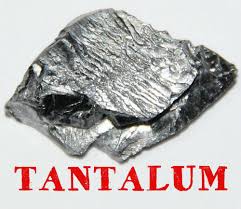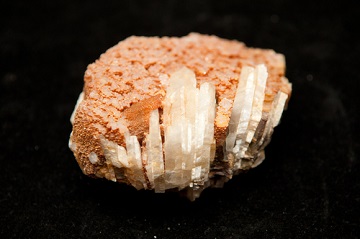Corrosion resistance of Tantalum
Sep 26,2019
Tantalum [7440-25-7], chemical symbol Ta, atomic number 73, and relative atomic mass (i.e., atomic weight) 180.9479, is the third and last element of group VB(5) of Mendeleev’s periodic chart. The word tantalum comes from the Greek Tantalus, son of Zeus and father of Niobe in Greek mythology, because in nature tantalum always occurs with its chemical neighbor niobium. Highly pure tantalum is a gray-blue, dense, ductile, malleable, and very soft metal. Hence, it is very easy to fabricate and can be worked into intricate forms and drawn into fine wire.

General Properties
The physical properties of tantalum are quite similar to mild steel, except that tantalum has a much higher melting point (m.p. 2996°C), exceeded only by tungsten, carbon, and rhenium, and a high density (16,654 kg.m–3), exceeded only by tungsten, rhenium, the dense PGMs, gold, and uranium.
Nevertheless, tantalum becomes very hard when traces of interstitial impurities such as H, C, N, and O are present in the body centered cubic crystal lattice structure. Its ultimate tensile strength is about 345 MPa, which can be approximately doubled by cold work. It can be welded by a number of techniques but requires completely inert conditions during welding in order to prevent metal oxidation. Moreover, tantalum exhibits a very low ductilebrittle transition temperature (DBTT), which is below 25 K.
Corrosion resistance
From a chemical point of view, tantalum is chemically inert to most inorganic and organic chemicals below 150°C, and the broadest range of its corrosion resistance is a direct consequence of enhancement of its valve action properties. For instance, solid tantalum is totally inert to hydrochloric and nitric acids until the boiling point, resistant to aqua regia, perchloric and chromic acids, oxides of nitrogen, chlorine and bromine, organic acids, hydrogen peroxide, and aqueous solutions of chlorides (e.g., FeCl3 and AlCl3).
For instance, the corrosive breakdown of tantalum occurs when metal is in contact with hydrogen fluoride and hydrofluoric acid, HF, fluoride salts or aqueous solutions containing fluoride anions in excess of about 5 ppm wt., orthophosphoric acid above 190°C, sulfur trioxide, SO3, and a fortiori hot concentrated and fuming sulfuric acid (i.e., Nordhausen’s acid), concentrated strong alkalis hydroxides (e.g., NaOH, and KOH), ammoniac, ammonium hydroxide, molten sodium and potassium pyrosulfates, and fused carbonates (e.g., Na2CO3, and K2CO3).
In this way tantalum’s corrosion resistance is similar to that of borosilicated glasses (e.g., Pyrex®) despite its being nonbrittle and a better thermal conductor. Tantalum is susceptible to hydrogen pickup and is extremely sensitive to embrittlement by nascent hydrogen gas evolved during galvanic coupling or cathodic polarization 95 Boehni, H. (1967) Corrosion behavior of various rare metals in aqueous acid solutions with special consideration of niobium and tantalum. This phenomenon leads rapidly to blistering of the metal. Therefore, for certain applications, it is necessary to protect the metal by anodic protection (e.g., impressed current).
In conclusion, despite its cost and high density, tantalum is an indispensable corrosionresistant material for building chemical-process equipment subjected to harsh media such as hot and concentrated strong acids (e.g., nitric, hydrochloric, and hydrobromic) and when no corrosion products are tolerated.
- Related articles
- Related Qustion
- Tantalum industrial applications and uses Sep 26, 2019
Tantalum’s good thermal conductivity (57.5 W.m–1.K–1 at 20°C) gives a suitable construction material when corrosion resistance has to be combined with good heat transfer conduction.
- Industrial Preparation of Tantalum Metal Sep 26, 2019
Tantalum can be prepared in several ways from different tantalum-containing materials. The primary source is columbotantalite ore, obtained after concentration of the raw ore by means of common ore-beneficiation processes (e.g., froth flota
Rubidium is a chemical element with the symbol Rb and atomic number 37. Rubidium is a very soft, silvery-white metal in the alkali metal group. Rubidium metal shares similarities to potassium metal and caesium metal in physical appearance,....
Sep 26,2019Inorganic chemistryCesium is a rare, silver-white, shiny metal with brilliant blue spectral lines; the element's name comes from "caesius," a Latin word meaning "sky blue." It is the softest metal, with a consistency of wax at room temperature. It would melt....
Sep 26,2019Inorganic chemistryTantalum
7440-25-7You may like
- Selenium:Discovery,Mining,Uses,Health effects
May 29, 2024
- Where is nickel found? Is it toxic?
May 29, 2024
- What is the crystal structure of molybdenum nitride?
May 29, 2024
- Tantalum
-

- $100.00 / 1kg
- 2023-07-04
- CAS:7440-25-7
- Min. Order: 1kg
- Purity: 99% Purity (What/sapp: +86 18145728414)
- Supply Ability: 1000 Tons/Month
- Tantalum
-

- $0.00 / 1kg
- 2022-09-27
- CAS:7440-25-7
- Min. Order: 1kg
- Purity: 99%
- Supply Ability: 1000kg
- Tantalum
-

- $10.00 / 1KG
- 2021-10-21
- CAS:7440-25-7
- Min. Order: 1KG
- Purity: 99%
- Supply Ability: 20 tons





